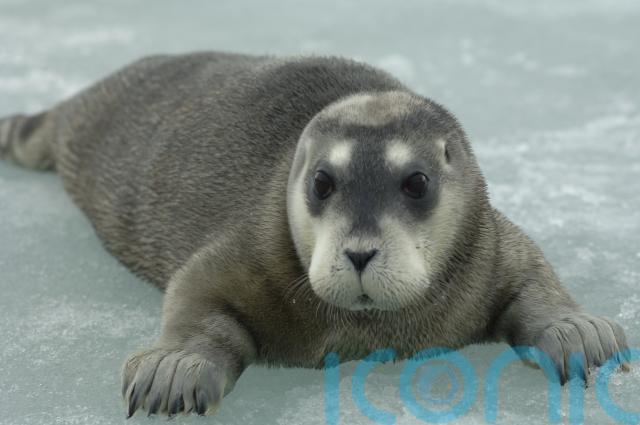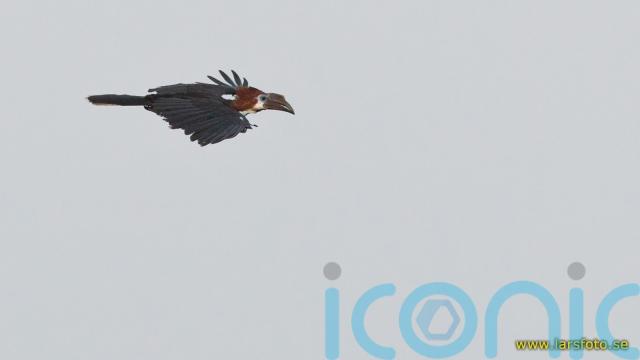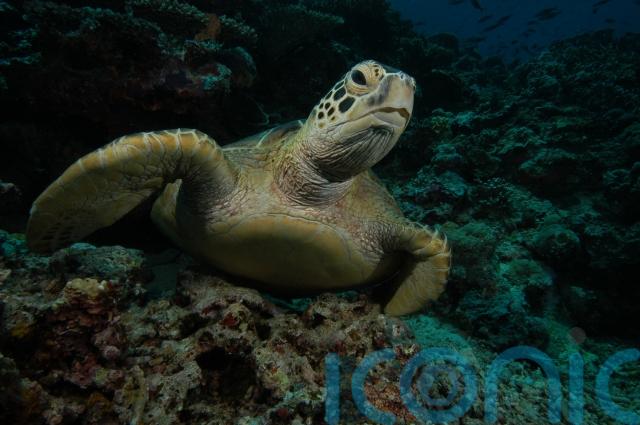
More than six in 10 bird species around the world are in decline as agriculture and logging threaten their homes, conservation experts have warned.
The latest update to the International Union for Conservation of Nature’s (IUCN) Red List of Threatened Species also warns that three species of Arctic seals have been pushed closer to extinction in the face of global warming, with the hooded seal now listed as “endangered”.
Globally, six species have been moved into the “extinct” category, according to the latest Red List, including the Christmas Island shrew, a species of cone snail and the slender-billed curlew, while three Australian mammals were declared as extinct in their first assessment.
But there is brighter news for green sea turtles, which have gone from endangered to “least concern” status following decades of conservation efforts.

The latest IUCN Red List update includes assessments that reveal an estimated 61% of bird species worldwide have declining populations, an increase from 44% in 2016.
More than one in 10 (11%) of the 11,185 bird species assessed for the Red List are globally threatened.
The most prevalent cause for declines in bird populations, which play a vital role in natural systems as pollinators, seed dispersers, pest controllers and scavengers, is their habitats being lost or degraded.
This is driven particularly by expanding and more intensive farming, and logging, which are the main threats to birds at risk of extinction, conservationists said.
In Madagascar, West Africa and Central America, loss of tropical forests is posing an increasing risk to birds, with 14 bird species found only in Madagascar’s forests pushed into the near threatened category and three now considered to be vulnerable to extinction.
In West Africa, five species are now near threatened, including the black-casqued hornbill which is also hunted and traded, while in Central America forest loss has pushed the northern nightingale-wren to near threatened.

Dr Ian Burfield, from BirdLife and the Bird Red List authority co-ordinator, said: “That three in five of the world’s bird species have declining populations shows how deep the biodiversity crisis has become and how urgent it is that governments take the actions they have committed to under multiple conventions and agreements.”
Climate change is another major threat to wildlife species, with rising temperatures pushing three species of Arctic seal closer to extinction, according to the update to the Red List which is released at the IUCN World Conservation Congress in Abu Dhabi.
The hooded seal has declined from vulnerable to endangered, while the bearded seal and harp seal have moved from least concern to near threatened.
Conservationists said the primary threat to seal species in the region was sea ice loss, driven by global warming which is happening four times faster in the Arctic than elsewhere.
Arctic seals rely on sea ice for breeding and raising their pups, as well as moulting, resting and accessing forage areas, while loss of ice also affects feeding habits and increases human activity which also threatens the seals.
Ice-dependent seals are a key food source for other animals such as polar bears, and indigenous people in the region, and they play a central role in the ecosystem, with their survival tied to the health of the entire marine environment, the IUCN said.

But species can rebound with the help of conservation action, with the global population of green sea turtles increasing by around 28% since the 1970s.
The turtles are found in tropical and subtropical waters around the world and play a key role in marine habitats such as seagrass meadows and coral reefs.
Action to reverse declines has focused on protecting nesting females and eggs on beaches, engaging with communities to reduce human consumption, and preventing accidental catch in fishing gear, with efforts in Ascension Island, Brazil, Mexico and Hawaii particularly successful, the IUCN said.
Mike Hoffmann, head of wildlife recovery at the Zoological Society of London (ZSL), said: “Today’s update shows the scale of the challenge, but it’s also a moment for celebration – and a timely reminder of exactly why we must keep going.
“After years perched on the edge of extinction, the green sea turtle is no longer considered at risk.
“That’s a huge win, and testament to decades of dedicated work alongside local communities.”
Dr Grethel Aguilar, IUCN director general, said the latest Red List update shone a light on both the “urgent challenges and powerful possibilities before us”.
“While species like Arctic seals and many birds face growing threats, the recovery of the green turtle reminds us that conservation works when we act with determination and unity,” she said.
She urged governments meeting next month for the latest round of UN climate talks in Brazil to accelerate action that protects wildlife, stabilises the climate and builds a future “where people and nature flourish together”.
Subscribe or register today to discover more from DonegalLive.ie
Buy the e-paper of the Donegal Democrat, Donegal People's Press, Donegal Post and Inish Times here for instant access to Donegal's premier news titles.
Keep up with the latest news from Donegal with our daily newsletter featuring the most important stories of the day delivered to your inbox every evening at 5pm.